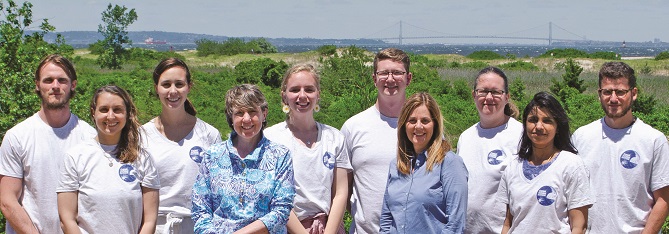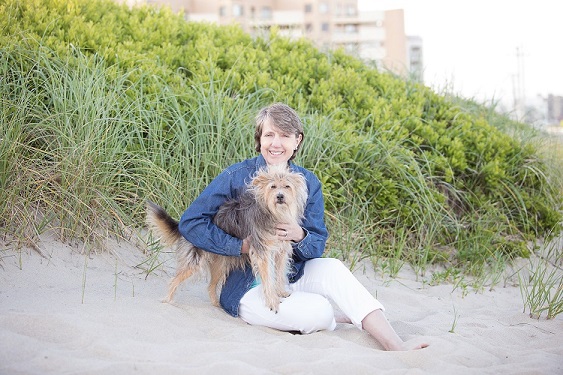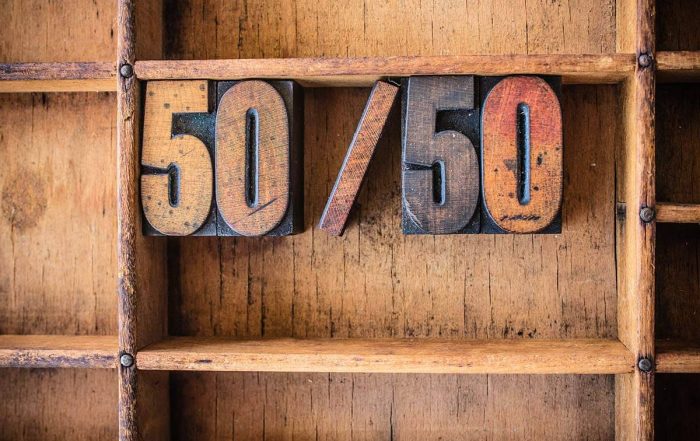FEATURED PHOTO: Cindy Zipf at the beach | CREDIT: Carmela Caracappa Photography
“Just one word: Plastics…There’s a great future in plastics. Think about it. Will you think about it?”
And so goes the career advice to young Benjamin in The Graduate, 1967.
Now, as we sit and enjoy our beaches and our rivers this summer, we should all take time to think about plastics, not as a great future promise, but as a major threat to the health of our water and marine life. Scientists estimate that each year eight million metric tons of plastics make their way into our oceans, the equivalent of 90 aircraft carriers. (National Ocean Service US Dept of Commerce.) And yet, individuals can make a very real difference. Meet Cindy Zipf, Executive Director and one of the founders of Clean Ocean Action (COA) based on Sandy Hook and soon to be launching a new office in Long Branch. Cindy is an intrepid champion of clean water, waging more than a 35 year battle to eliminate ocean dumping and to clean and protect our ocean and other waterways. Through COA’s Beach Sweeps, legislation support, and education, New Jersey has gone from “The Ocean Dumping Capital of the World” to a clean ocean water destination. But the battle is far from over and there is much more to be done. Cindy speaks about her journey and the ways in which ordinary citizens can make a difference.
CM: Did you grow up near a beach?
Cindy: grew up in Rumson and it was a quick walk to Sea Bright where my life was really spent in the water. My mom told stories that I was always drawn into the ocean. For instance, as an infant when I was crawling in the sand a wave came, scooped me up and took me into the ocean. The next wave rolled me back onto the beach and I was giggling like my mother had never heard before. When I got older, I went to the beach every day. I put the books down and off I went. I really spent my childhood in the ocean, on the beach or exploring the rivers.
CM: Many of us love the beach and want it to be clean, but what was it that sparked your extreme dedication?
Cindy: When I was in sixth grade everyone went around the room and said what they wanted to be when they grew up. I was the oddball because I wanted to be a marine biologist. My favorite shows were Flipper and the Undersea World of Jacques Cousteau – I wanted to be Jacques “Cousteauette.”
I went to the University of Rhode Island to start my path. (BA in Geography and Marine Affairs) When I was a junior, I became an intern at the National Marine Fisheries Service on Sandy Hook. At the time the federal government had authorized some exploratory oil drilling off Cape May, NJ. One experiment I worked on was watching marine life being exposed to drilling muds, a chemical cocktail used to lubricate the drill bits. Oh my gosh, these animals banged against the tanks trying to get away from the chemicals, and they tried to jump out of the sealed tanks – it was horrible, very disturbing. So that summer I decided I really wanted to protect marine life. I met Dery Bennett who was the Director of the American Littoral Society (ALS). He said to me, “If you ever want to help save the coast, let me know.” I came aboard and Dery was an incredible mentor. I became an advocate, using my science background to defend the marine environment.
CM: How did COA come about and are you a national organization?
Cindy: While at ALS, they had the Ocean Dumping Task Force to challenge ocean dumping, which I worked on extensively, and it formed the basis of what would become Clean Ocean Action. That was in 1984 when the New York/New Jersey area was known as the “Ocean Dumping Capital of the World” with eight ocean dumpsites. At the same time, there were 800 beach closures one summer due to sewage, garbage, and medical waste on beaches.
COA started as a coalition which engaged business and community interests, as well as traditional fish huggers and environmentalists. This was very unique in the day because rarely did garden clubs, realtors, commercial and recreational fishermen, chambers of commerce, and eco folks band together toward a common goal. When we went into battle to stop ocean dumping, these different voices and perspectives were united. This really helped get the elected officials’ attention. Most importantly, we knew the ocean was a shared resource and COA was, and always will be, very non-partisan.
While COA’s focus is exclusive to the ocean off New Jersey and New York, there have been national implications of the positive precedents we have set, laws that were passed, and the impact we’ve made. Even COA’s coalition model is now more the norm.

PHOTO: Clean Ocean Action has a dedicated crew who help keep our ocean and waterways clean. Left to right: Spencer Munson, Program and Resource Coordinator; Allie Meyerhoff, Marketing and Communications Coordinator; Alison McCarthy, Coastal Watershed Protection Coordinator; Cindy Zipf, Executive Director; Kendall Keelen, Policy Fellow; Peter Blair, Policy Attorney; Mary-Beth Thompson, Chief Operating Officer; Kari Martin, Education Coordinator; Swarna Muthukrishnan, PhD, Staff Scientist; and Zack Karvelas, D.W. Bennett Fellow for Coastal Advocacy
CM: What has given you particular satisfaction?
Cindy: Working with different people and groups to tackle and stop eight ocean dumpsites was one of the most joyful and inspiring aspects of COA. We even stopped one site, the hazardous waste incineration site, before it started. Many years ago, people had a very convenient place to dump their waste – the ocean. Over the years, garbage washed-up on the beaches and dead animals too. There were cholera banks, a wood burning site and eventually more industrialized materials (acid waste) and municipal waste (sewage sludge) were dumped. That was the mentality. And these sites were managed by the federal government and sanctioned by the Environmental Protection Agency! Back then the general thinking was, “Here’s a good idea: the ocean’s free, it’s open 365 days a year and it doesn’t scream when you dump into it.” The ocean didn’t have a real voice back then and COA became the voice of the ocean. The last of these dumpsites closed in 2000. We began in 1984 – it took 15 years. It seemed like a long time to us, but I’ve been talking to folks who thought it would never end because there was so much money to be made in dumping. Today, people who never knew the history of ocean dumping are shocked and appalled. Therein lies a true victory and joy because it helps to ensure we will never go back to those barbaric ways.
CM: And plastics! What are the ramifications?
Cindy: We have become very plastic dependant and wasteful. As a result, plastic debris is omni-present in our lives from the atmosphere to the deepest trenches in the ocean. We are the source of all plastic. For example, every time it rains the water washes litter from the streets and sidewalks into storm drains that lead to the waterways and ultimately the ocean. Much litter is also blown into the ocean from the wind. The plastic and other debris are not just on the surface; they literally are in the entire water column. Every piece of plastic in the ocean breaks into microplastics and becomes smaller and smaller. A study estimates that people are now ingesting 50,000 pieces of microplastics every year, coming from the water or from the air, or on and in our food — even getting into some fish tissue. In fact, many marine animals are also eating plastic mistaking it for food. They die of starvation because their stomachs are packed with plastic. One example was a juvenile sperm whale in Europe who struggled and eventually died so emaciated, he looked like a giant flattened plastic bag on the beach. Sixty-four pounds of plastic were found in his stomach. At least we can bear witness to this when sea life washes-up on the beach. I don’t know how many millions of marine animals are dying every year that we don’t see. There is no way we can blame plastics on anything else except “we the people.” And it’s “we the people” who must solve this problem.
CM: In the 35 years of COA, what changes have you observed in the waterways’ conditions?
Cindy:It is a mixed bag. On the one hand, ocean water quality has vastly improved. When we started there was an area known as the “dead sea” because it was just thick with sewage sludge and industrial waste. That area has recovered. Marine life is certainly coming back and garbage washups or beach closings due to raw sewage are rare. We’ve gone from being the nation’s laughingstock to a premier international coastal tourism destination. We depend so much on the ocean–the oxygen we breathe, the $32 billion tourism industry, and fishing. They are all gifts the ocean provides for free. All she asks is that we keep her healthy. On the other hand, the ocean is in crisis from climate change caused by the use of fossil fuels, including plastics production, by the way. Many know climate change causes sea level rise, but it also causes ocean acidification that is changing the pH of the ocean which can kill plankton that provides us with life-supporting oxygen. As for our other waterways, they are becoming more polluted from runoff and old sewer systems. In recent years we’ve heard people have become sick by falling into the Navesink River, and an area was downgraded. In response, COA started Rally for the Navesink, and is tracking and reducing “poo”-llution. We are also using this program as a model for other waterways.
CM: What is the greatest challenge for COA?
Cindy: Keeping people aware of the enormous effort, year-round vigilance, and resources it requires in order to keep the ocean clean. If COA was to close up shop, as they say, the ocean and waterways that lead to it would revert very quickly back to being polluted. Most kids today have never heard of ocean dumping. They’re starting from, “The ocean is always clean when I go to it.” Well, it’s always clean because we worked really hard to get it that way! Schools need to keep teaching how important the environment is and peoples’ role in protecting it, especially from climate change and plastics. I’ve talked to teenagers who are despondent about the environment and they don’t know what to do. That’s not healthy. They all have the power to do something and I really want to empower youth to take on these challenges and see that they can make a difference. Despair, or ignoring the problem, or hoping it goes away are not healthy responses. Nature can heal if we give her a chance.
CM: Is there a current fight for the ocean being waged by COA?
Cindy: There are some really big fights going on, but the chronic problems – plastic plague, “poo”llution in the waterways from fecal contamination, fertilizer – those are the greatest challenges right now in addition to climate change. There are also site-specific issues. Currently, a private company has proposed a pipeline off the Raritan Bay and into Sandy Hook and our ocean. The company admits it would resuspend about a million tons of toxic mud into the water column and would spill nearly 700,000 gallons of drilling mud into the water. It also would result in a horrifying amount of air pollution. The project is allegedly to deliver natural gas to New York but an independent study found New York doesn’t need the pipeline. New York and New Jersey oppose the project and denied the permits, but there is a loophole and the company has reapplied. The pipeline must be stopped. There is no benefit to our state.

PHOTO: Cindy with her dog, Jersey Girl | CREDIT: Carmela Caracappa Photography
CM: What message would you like world leaders to hear and understand?
Cindy: Treat the ocean like your life depended on it – because it does. I can’t emphasize enough that one can deny a problem exists, but that doesn’t change the fact that abuses and negative impacts are happening. The environment truly is the most important element to respect and protect. Without clean water, without clean air, the planet is not livable.
CM: What impact can ordinary citizens make to help in the cause?
Cindy: Vote! to have a voice. Of key importance is knowing who is representing you. Engaging in democracy is step one. Knowing who you are voting for and what their position is on the environment should be one of your core principles for life. Also, people may consider making a donation. COA relies largely on donations. I try to remind people to consider what a day at the beach and being able to dive into the clean ocean are worth to them. COA also hosts many Beach Sweeps in which citizens of all ages can participate, and all year round, people can reduce their use of plastics, especially single use!
CM: Are there unusual items recovered on the beach during the Beach Sweeps?
Cindy: We find the wackiest things on the beach in our clean-ups. We keep a “Roster of the Ridiculous” and find things like voodoo dolls, a photo of Mao Tse Tung and, literally, a kitchen sink. You wonder how these items get out there.
CM: What do you do in your free time; what keeps you positive?
(Cindy’s dedication to COA was more subtly revealed by her need to pause and really wrack her brain about her “free time”.)
Cindy: Hmm, I like to garden…and I am mostly inspired by people stepping up, demonstrating leadership and wanting to help.
CM: Have you seen the next generation “stepping up”?
Cindy: Yes. One example is a fabulous high school senior who came to us after SuperStorm Sandy. Students were displaced and the school and teachers in Middletown were perplexed as to how to provide them with a good learning experience and so the school, very innovatively, established a program of internships. Derek Noah came to interview us and others to see which organization would pass muster with him. He decided on COA, lucky for us. He was with us for six months and became inspired to work on environmental issues. He now works for Terracycle, one of the most innovative recycling companies in the world, and is still so supportive of our work. He wants to engage young people so he is starting a young professionals board for COA and we couldn’t be more thrilled.
CM: Do you have a favorite quote?
Cindy: I like “A rising tide lifts all boats” because it’s really true that everyone benefits when we all work together.
FUN FACTS
350 species of birds and 300 species of fish depend on NJ’s coast and ocean
5 species of sea turtles enjoy the Jersey shore. Only 7 species of sea turtles exist in the world.
Beach Sweeps by the Numbers since 1985:
- 6,742,941 pieces of trash removed
- 133,390 volunteers donated 800,340 hours
Beach Sweeps in just 2018:
- 81.77% of debris was plastic
- 5,470 balloons collected–a record amount
- $751,662 value of volunteer time
Impact: COA’s Beach Sweep data was used to:
- help pass a statewide smoking ban on New Jersey’s beaches
- fix the state-wide Bag Fee Bill
- support 28 (and counting) municipalities banning single use products
For information on how you can help, contact cleanoceanaction.org or call 732.872.0111.
*Note: Clean Ocean Action does not canvas door to door, and is not Clean Water Action.

See this story in print!
View the digital edition of this story here.
Recommended for you
Kids with Cancer Need Help… Here’s What You Can Do
The daily burdens thrust upon families who are battling pediatric cancer are [...]
Monmouth County Historical Association Virtually Celebrates Annual Garden Party
FEATURED PHOTO: MCHA Executive Committee: (l to r front row) Kathy Jones (2nd [...]
Meet Your Neighbor: Stacy Wiener
FEATURED PHOTO: This is where caption text will go for featured photo. As [...]
Monmouth Film Festival Redefines the Festival Experience this August
As film and theater folk like to say, the show MUST go on, [...]
Meet Your Neighbor: Laura Ciccone, Educational Advisor
FEATURED PHOTO CREDIT: Cathy Padilla Laura Ciccone lives in Lincroft with her [...]
Pet Celebs: August 2020
Your pets can be celebrities too. Send in a photo to info@communitymagazinenj.com! [...]









